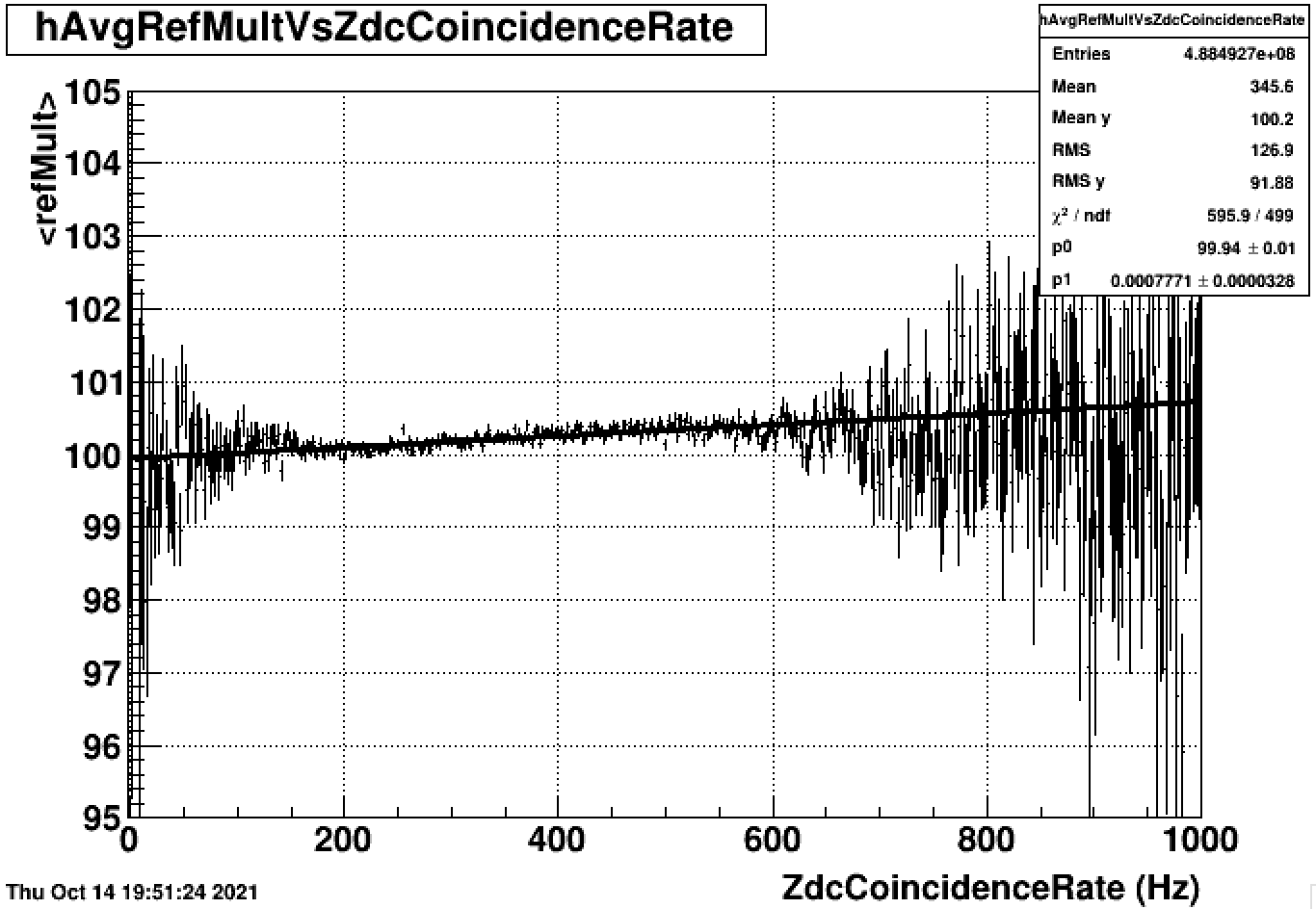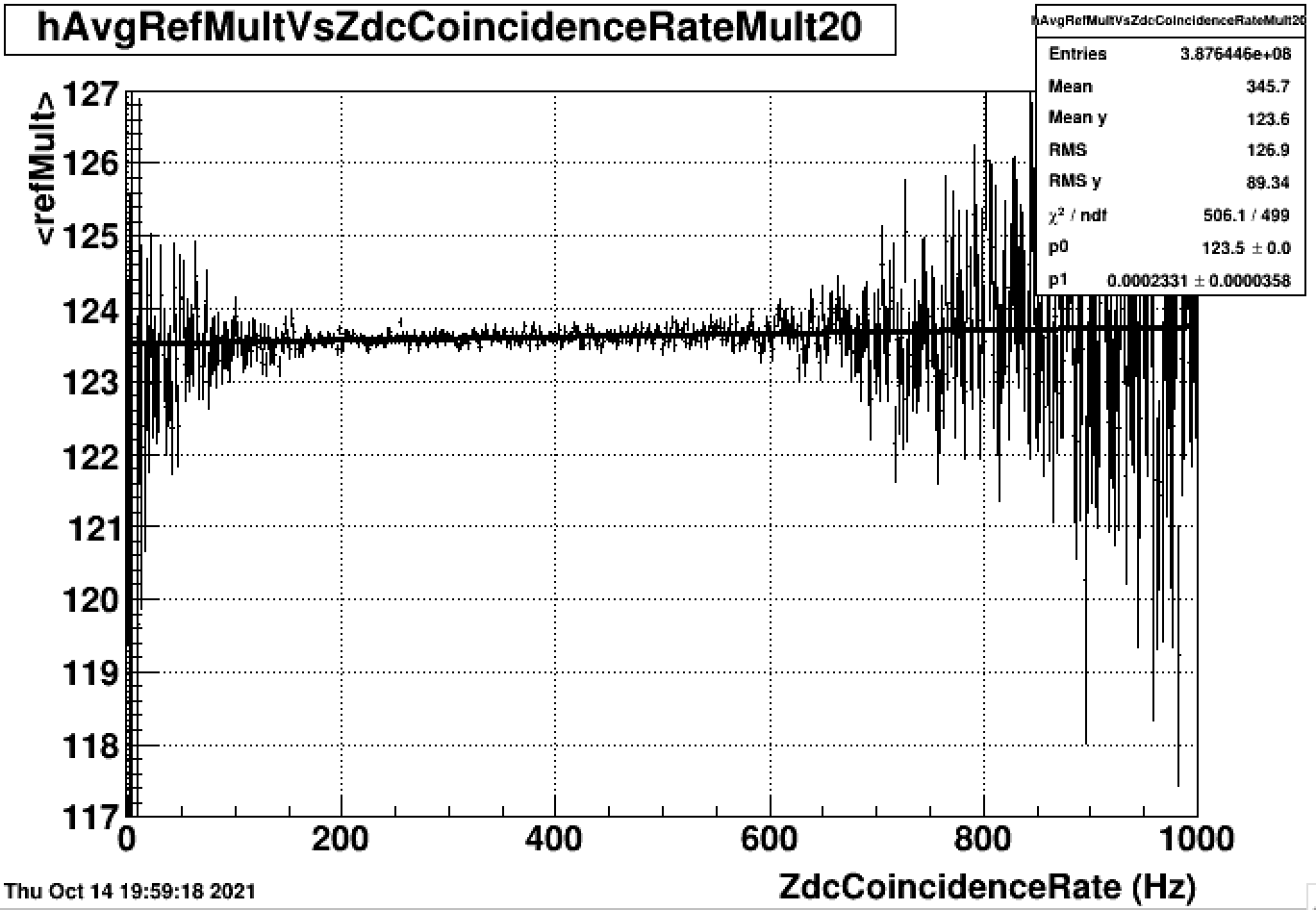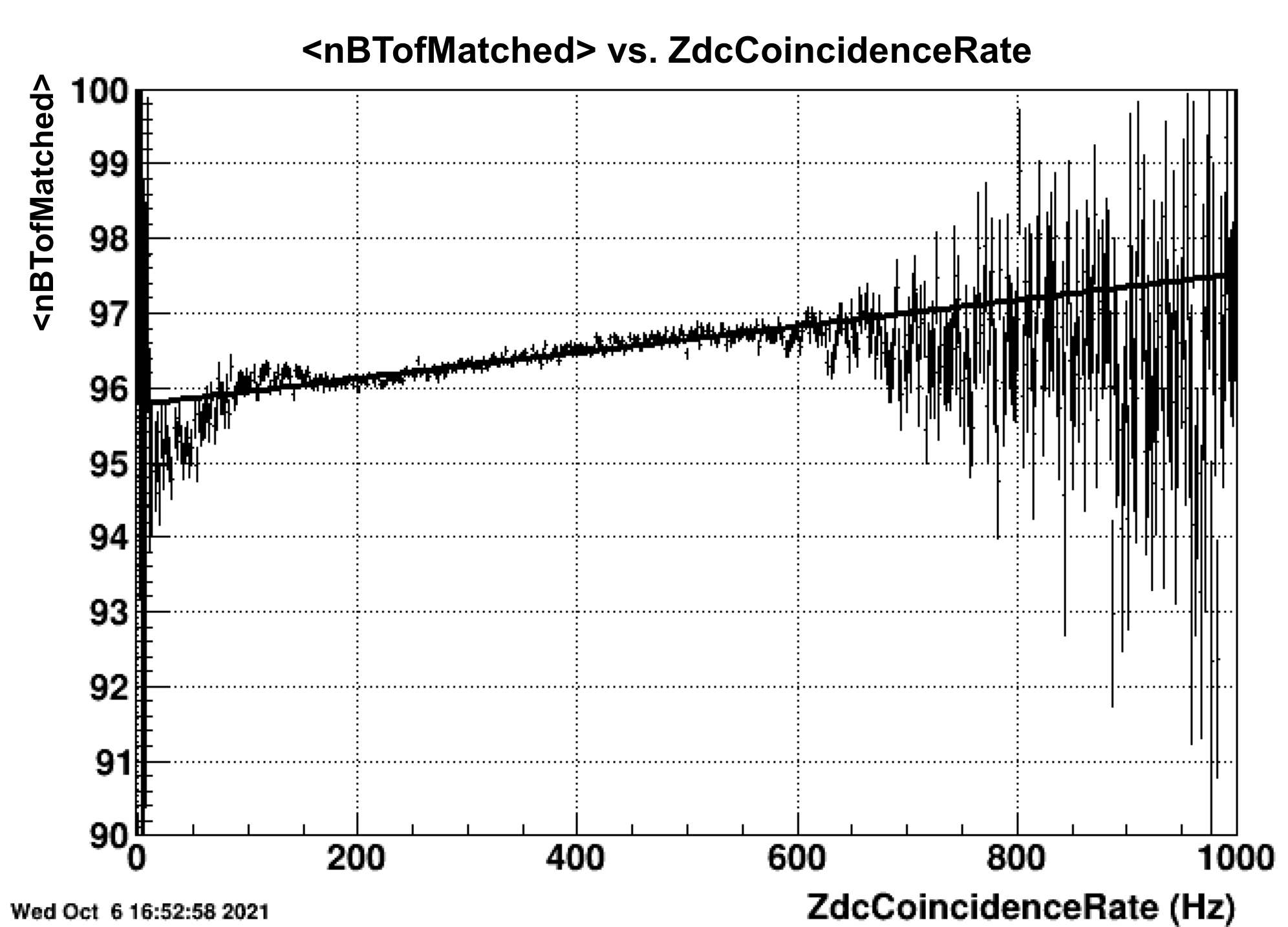Strange Luminosity Dependence in 19.6 GeV 2019
Date: October 14th, 2021
Professor Cebra had suggested that the luminosity dependence could be due to background from beam-gas interactions early in the run since there was beam-scrubbing being done at the beginning of the 19.6 GeV 2019 run. Since earlier run times correlated with lower luminosities for this data set, this could explain the apparent luminosity dependence. A way to test for this effect was to only include events with multiplicities greater than some cutoff in the <refMult> vs. ZdcCoincidence Rate since beam-gas interactions are expected to have low multiplicities. Some results are below.
This is the <refMult> vs. ZdcCoincidenceRate with no multiplicity cut:
slope: m=0.00078 +/- 0.00003

This is the <refMult> vs. ZdcCoincidenceRate with a cut refMult>=20:
slope: m=0.00023+/-0.00004

This reduction in the luminosity dependence supports the beam-gas idea. The strange luminosity dependence at least seems to have something to do with low-multiplicity events.
Please email me if you have any suggestions or insights on this topic.
**************************************************************************************
Date: October 7th, 2021
I presented at the Tuesday Centrality meeting (10/5/21) that <refMult> vs. ZdcCoincidenceRate had a positive slope. We expect luminosity dependence to have a negative slope. It was speculated that the strange luminosity dependence was due to pileup that was not rejected by our pileup removal procedure. A way to test this was to plot <nBTofMatched> vs. ZdcCoincidenceRate. As you can see below, <nBTofMatched> also shows a positive correlation with ZdcCoincidenceRate. The slope is m=0.00175 +/- 0.00003. The slope of <refMult> vs ZdcCoincidenceRate was m=0.0014 +/- 0.0001.

Please email me if you have any suggestions or insights on this topic.
- sweger's blog
- Login or register to post comments
